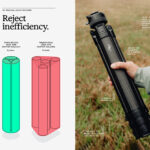Bokeh almost always looks awesome in portraiture. Photographer Jay P. Morgan shows us how to combine an awesome Christmas light setup with flash to create some festive portraiture:
As you can see from the video, this type of shot requires some planning.
First of all, you need to find the proper exposure for the ambient light. It’s good to have your subject avoid most of the ambient light but have just enough to have the bokeh in the background.
There are two ways that you can achieve bokeh: using a longer lens with a wide enough aperture (70-200mm f/2.8 for example) or using a decent prime lens with extremely wide aperture (50mm f/1.8, for example). The wider the aperture and the longer, the more bokeh you’ll get. You generate good bokeh if you zoom in with longer lens—the more you zoom in the more bokeh you get. Or you can go closer and open up the aperture on a prime lens.
Once you have the bokeh ordeal all set up, it’s time to light up the subjects. In this case, Morgan used three lights, one of which was used to pop up the shadows—that would be the part that receives the least amount of light but it generates the definition and detail in the shot.
Then, he used the other two lights from both sides to create key and rim lights in order to make his subjects pop from the background.
The setup is pretty simple, as long as you have the right tools. Morgan used LED light for the shadows and two flashes for the rim and key lights, but with the right amount of power you can do this with three constant lights or three flashes. Any other combination will also work, as long as color temperatures match.

Lighting Setup for Mixing Flash and Christmas Light Bokeh
Unlike Morgan, I’d use larger softboxes on the flashes and the fill light in order to avoid those harsh shadows, because when you mix up ambient light and flash, you want your flash to have almost equal softness as the ambient light would generate. Ambient light right after sunset is soft and smooth, as you should get from your flashes. When you don’t match the smoothness properly you risk the viewer noticing the light is fake. It just doesn’t look right.
Like This Article?
Don't Miss The Next One!
Join over 100,000 photographers of all experience levels who receive our free photography tips and articles to stay current:








Leave a Reply